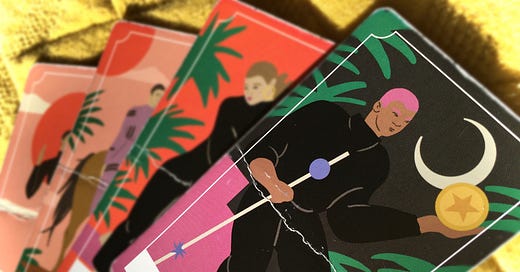Sometimes Dancin' (pt. 2)
In which the work works on me . . . with help from the King of Pentacles
A past teeming with stories has led us to this moment. It finds me already in place, like the King of Pentacles on his throne. I am orienting myself, settling into space, preparing for serious play. Almost despite myself, this writing became a demo of my working methods. The King (as we’ll see…
Keep reading with a 7-day free trial
Subscribe to Artist, Learner to keep reading this post and get 7 days of free access to the full post archives.





